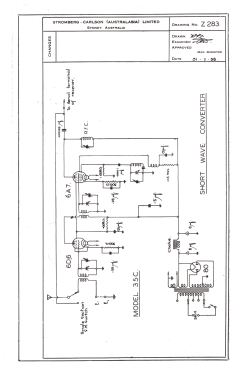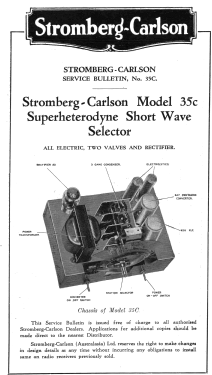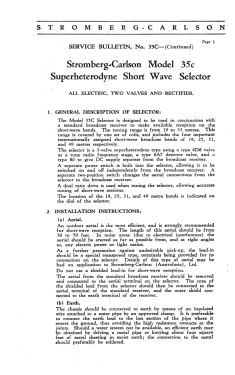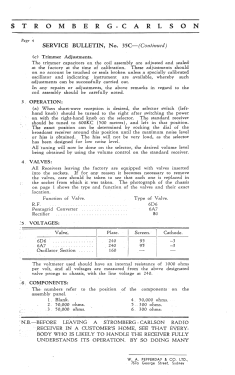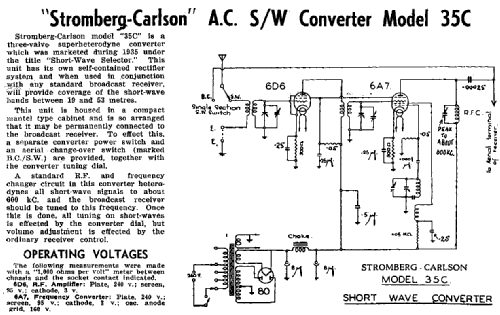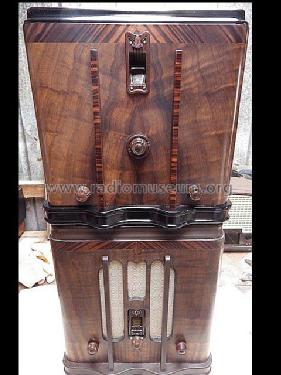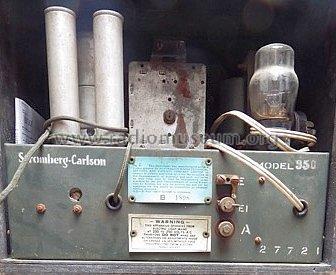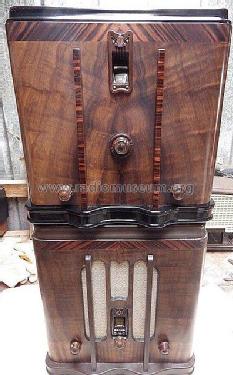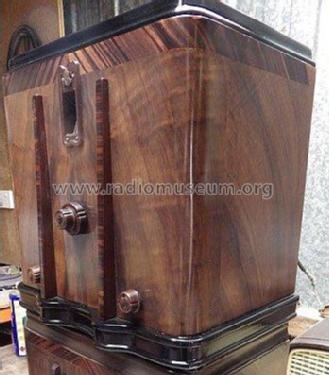Short-Wave Selector 35C
Stromberg-Carlson (Australasia) Pty. Ltd. Sydney
- Paese
- Australia
- Produttore / Marca
- Stromberg-Carlson (Australasia) Pty. Ltd. Sydney
- Anno
- 1935
- Categoria
- Adattatore (per OC/FM/VHF/UHF inclusi moduli incorporati), convertitore di frequenza
- Radiomuseum.org ID
- 170946
Clicca sulla miniatura dello schema per richiederlo come documento gratuito.
- Numero di tubi
- 3
- Principio generale
- Supereterodina con stadio RF; ZF/IF 600 kHz
- N. di circuiti accordati
- 4 Circuiti Mod. Amp. (AM)
- Gamme d'onda
- Onde corte (solamente OC)
- Tensioni di funzionamento
- Alimentazione a corrente alternata (CA) / 240 Volt
- Altoparlante
- - - Nessuna uscita audio.
- Materiali
- Mobile in legno
- Radiomuseum.org
- Modello: Short-Wave Selector 35C - Stromberg-Carlson Australasia
- Forma
- Soprammobile con qualsiasi forma (non saputo).
- Annotazioni
-
The Model 35C Selector is designed to be used in conjunction with a standard broadcast receiver to make available reception on the shortwave bands. The tuning range is from 19 to 53 metres.
This range is covered by one set of coils and includes the four important internationally assigned shortwave broadcast bands of 19, 25, 31, and 49 metres respectively.The selector is a 3-valve superheterodyne type using a type 6D6 valve as a tune radio frequency stage, a type 6A7 detector valve, and a type 80 to give DC supply separate from the broadcast receiver.
A separate power switch is built into the selector, allowing it to be switched on and off independently from the broadcast receiver. A separate two-position switch changes the aerial connections from the selector to the broadcast receiver.
A dual ratio drive is used when tuning the selector, allowing accurate tuning of short-wave stations.
The location of the 19, 25, 31, and 49 metre bands are indicated on the dial of the selector.
Operation:
When shortwave reception is desired, the selector switch (lefthand knob) should be turned to the right after switching the power on with the right-hand knob on the selector.
The standard receiver should be tuned to 600KC (500 metres) and left in that position.The exact position can be determined by rocking the dial of the broadcast receiver around this position until the maximum noise level or hiss is obtained. The hiss will not be very loud, as the selector has been designed for a low noise level.
All tuning will now be done on the selector, the desired volume level on the standard receiver.
- Prezzo nel primo anno
- 19.00 Aus£
- Letteratura / Schemi (1)
- Radio Trade Annual of Australia (Radio Trade Annual 1939 P347.)
- Letteratura / Schemi (2)
- - - Manufacturers Literature (Service Bulletin No. 35C)
- Autore
- Modello inviato da Stuart Irwin. Utilizzare "Proponi modifica" per inviare ulteriori dati.
- Altri modelli
-
In questo link sono elencati 359 modelli, di cui 178 con immagini e 185 con schemi.
Elenco delle radio e altri apparecchi della Stromberg-Carlson (Australasia) Pty. Ltd. Sydney
